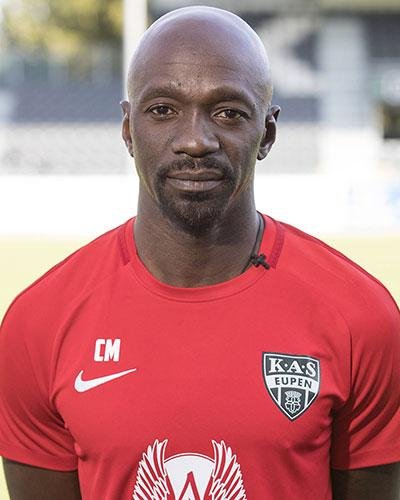Who is Claude Makélélé?
Claude Makélélé is widely regarded as one of the greatest defensive midfielders in the history of football. His role in transforming the way football teams approach defensive midfield positions is so impactful that his name is synonymous with the position itself. Clubs, players, and managers continue to reference the “Makélélé role” as shorthand for the deep-lying defensive midfielder whose primary duty is to shield the defense, break up attacks, and recycle possession. In this article, we will delve into Makélélé’s career, his unique playing style, his contributions to club and country. His post-playing career, and the personal life that shaped him—including his relationship with French model and actress Noémie Lenoir.
Noémie Lenoir: The Personal Side of Claude Makélélé
Noémie Lenoir is a French model and actress who became widely known in the late 1990s and early 2000s for her work with prominent fashion houses and brands. Born on September 19, 1979, in Les Ulis, France. Lenoir was discovered at a young age and quickly rose to prominence in the modeling world. Appearing in campaigns for Gucci, L’Oréal, and Victoria’s Secret, among others.
Lenoir and Claude Makélélé began their relationship in the early 2000s, and together they became one of France’s most famous celebrity couples. Their relationship was marked by the birth of their son, Kelyan Makélélé, in 2005. Despite their high-profile status, both Makélélé and Lenoir kept much of their personal lives private, though they were often spotted together at public events and galas.
Noémie Lenoir’s career in the fashion industry was remarkable, and she transitioned into acting with notable success. She appeared in films such as Rush Hour 3 and After the Sunset, further solidifying her position as a multi-talented celebrity. However, despite their mutual fame and success, Makélélé and Lenoir’s relationship ended in 2009, though they have remained cordial for the sake of their child.
Early Life and Background:
Claude Makélélé was born on February 18, 1973, in Kinshasa, Zaire (now the Democratic Republic of Congo), but moved to France at a young age. He grew up in a football-loving family, and his father was a professional footballer as well. Football ran through Makélélé’s veins, and it became clear early on that he had a natural talent for the sport. He began his youth career at the French club US Melun before moving to the prestigious academy at Brest.
Rise to Prominence at Nantes:
Claude Makélélé’s first professional break came when he signed with Nantes in 1992. Although he started his career as a winger. It wasn’t long before his coaches recognized his ability to read the game and his defensive tenacity. This led to his transition into a central midfield role. At Nantes, Makélélé won the Ligue 1 title in 1995 and started gaining attention for his work rate, tactical discipline, and positioning.
During his time at Nantes, Makélélé developed a reputation as a hard-working midfielder who could dictate the tempo of a game from deep. Breaking up opposition play and starting attacks with quick, incisive passes. His performances were noticed by clubs across Europe. But it was his move to Spain that truly elevated him into the upper echelons of European football.
Makélélé at Celta Vigo:
In 1997, Claude Makélélé joined Celta Vigo in Spain. A club known for nurturing talent and playing a fluid, attacking style of football. While Celta was a mid-table team in La Liga, Makélélé’s presence allowed the team to punch above its weight. His defensive contributions freed up more attacking players to focus on offense, making him indispensable.
Makélélé’s performances at Celta Vigo were a major factor in attracting the attention of Real Madrid. In 2000, after three successful seasons with Celta. He made the move to the Bernabéu, where his role in one of the most star-studded teams in football history would become the stuff of legend.
The Galácticos and Real Madrid:
Claude Makélélé’s arrival at Real Madrid coincided with the peak of the club’s famous “Galáctico” era. The team boasted players like Zinedine Zidane, Luis Figo, Ronaldo, and Raúl. Despite the enormous talents in this attacking lineup, Makélélé became the unsung hero of the team. He was the engine that allowed the stars to shine, performing the unglamorous but essential tasks of winning back possession. Covering for defenders, and distributing the ball.
Real Madrid’s dominance in this period included winning La Liga titles and, most notably, the UEFA Champions League in 2002. While players like Zidane and Ronaldo earned most of the headlines. Insiders and experts knew that Makélélé was the backbone of the team. Zidane himself famously said, “Why put another layer of gold paint on the Bentley when you are losing the entire engine?”
Makélélé’s exit from Real Madrid in 2003 came amid controversy. He felt underappreciated and underpaid compared to the attacking stars, despite his vital role in the team. His departure was marked by criticism from fans and analysts who believed Madrid was losing their most important player.
Also Read: Quran classes. Unlock Quran Knowledge Online
Revolutionizing Chelsea and the Makélélé Role:
Following his controversial exit from Real Madrid. Claude Makélélé moved to Chelsea in 2003, joining a team that was beginning to emerge as a powerhouse under new owner Roman Abramovich and manager Claudio Ranieri. Mourinho built the Chelsea team around Makélélé’s defensive midfield presence. Creating a system that would become the blueprint for success in the Premier League.
Makélélé’s impact at Chelsea was immediate. In his first season, he helped Chelsea win their first league title in 50 years, followed by another in 2005-2006. His role in these title victories was immense. Sitting just in front of the back four. Makélélé disrupted opposition play. Cut off passing lanes, and allowed the more attack-minded players like Frank Lampard and Didier Drogba to focus on creating and scoring goals. His contributions were so crucial that the “Makélélé role” became part of football’s lexicon.
Makélélé stayed at Chelsea until 2008, becoming a fan favorite and earning numerous accolades, including two Premier League titles, an FA Cup, and two League Cups.
International Career:
Claude Makélélé’s international career with the French national team was equally impressive. Although he did not initially feature prominently, he became a key player for France in the mid-2000s. Makélélé was part of the French squad that reached the final of the 2006 FIFA World Cup, forming a formidable midfield partnership with Patrick Vieira and Zinedine Zidane.
While France lost the final to Italy on penalties. Makélélé’s performances throughout the tournament were crucial in helping the team reach that stage. His ability to break up attacks and provide stability in midfield was essential. Particularly as Zidane played in a more advanced role. Makélélé retired from international football after the 2008 European Championships, having earned over 70 caps for his country.
Post-Playing Career:
After retiring from playing, Claude Makélélé turned to coaching and management. His first foray into coaching came as an assistant manager at Paris Saint-Germain (PSG). Where he worked alongside head coach Carlo Ancelotti. His experience and knowledge of the game were highly valued.
In 2014, Makélélé took on his first managerial role at SC Bastia in France. Makélélé has since worked in various coaching roles, including at Swansea City and as head coach of Belgian club Eupen. His coaching career has been steady. And he continues to pass on his vast knowledge to the next generation of footballers.
The Makélélé Legacy:
Claude Makélélé’s legacy is far-reaching. He revolutionized the defensive midfield position, making it one of the most important roles in modern football. His intelligence, positioning, and ability to anticipate danger set him apart.
Beyond his tactical contributions, Makélélé’s professionalism and work ethic made him a model for aspiring footballers. He was never the flashiest player on the pitch, but he was always one of the most effective. His calm demeanor, leadership qualities, and footballing intelligence have left a lasting impact on the sport.



More Stories
Represent Hoodie: Fashion is Far More Than
Why Balenciaga’s Triple S Sneakers Are So Popular
Sp5der Hoodie: Fashion is Far More Than Just